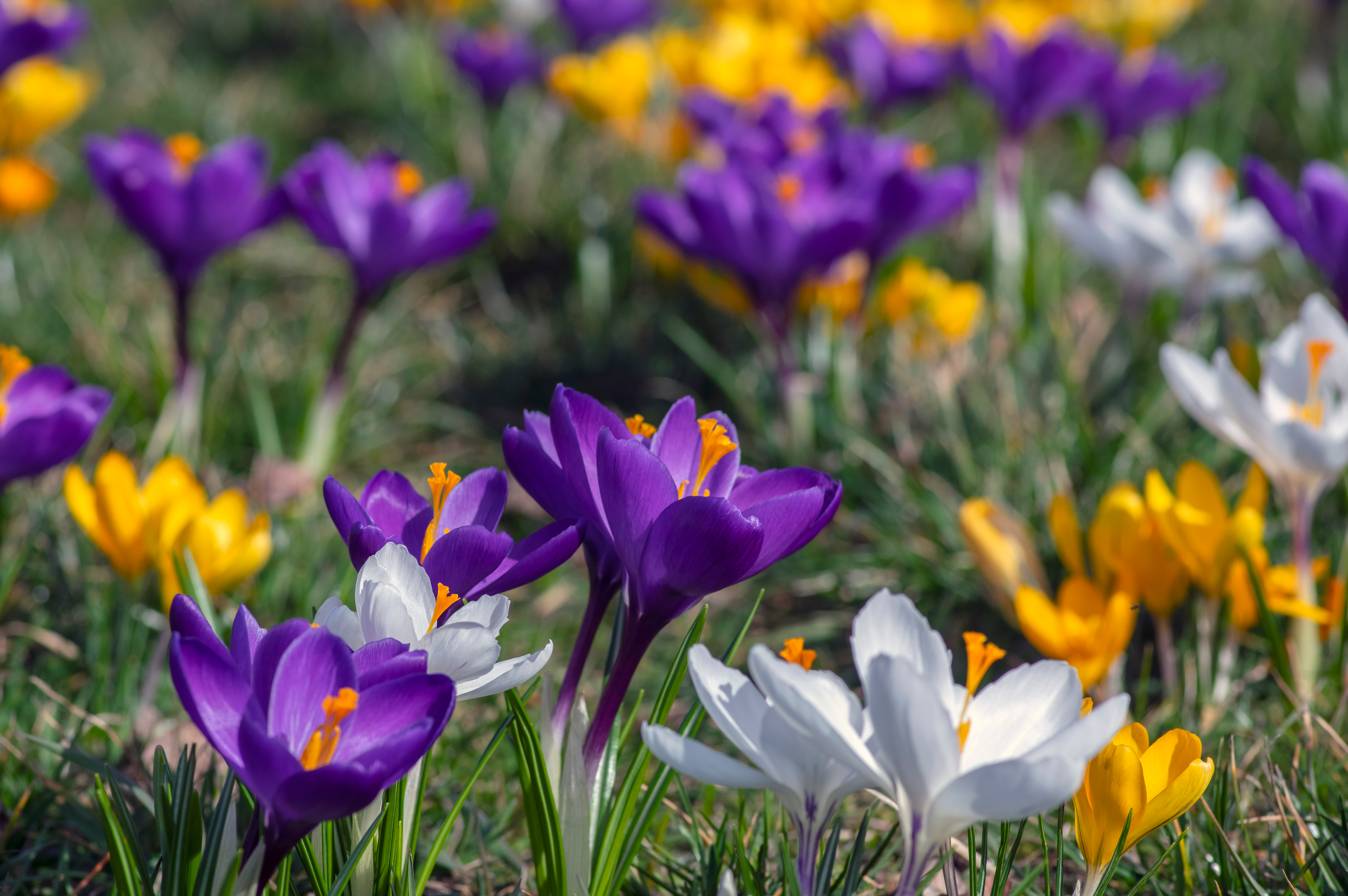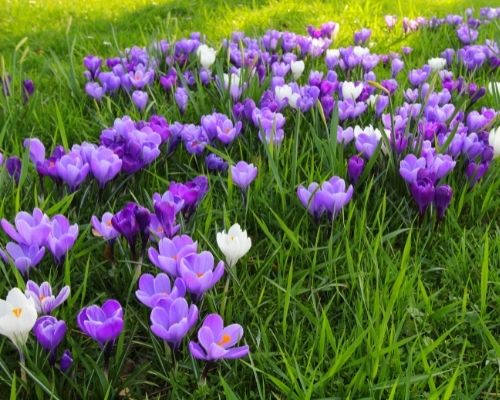Your Guide to Planning, Planting, and Growing Crocus
Crocus are among the very first flowers to bloom each spring. In cold climates, their cheery blossoms will often open when there's still snow on the ground. Crocus flowers come in Easter-egg colors of purple, yellow, lavender, cream and white. Over time, these carefree bulbs will naturalize and multiply to produce more flowers every year. Crocus blossoms are magnets for winter-weary bees, who are drawn to the rich, golden pollen inside each flower.
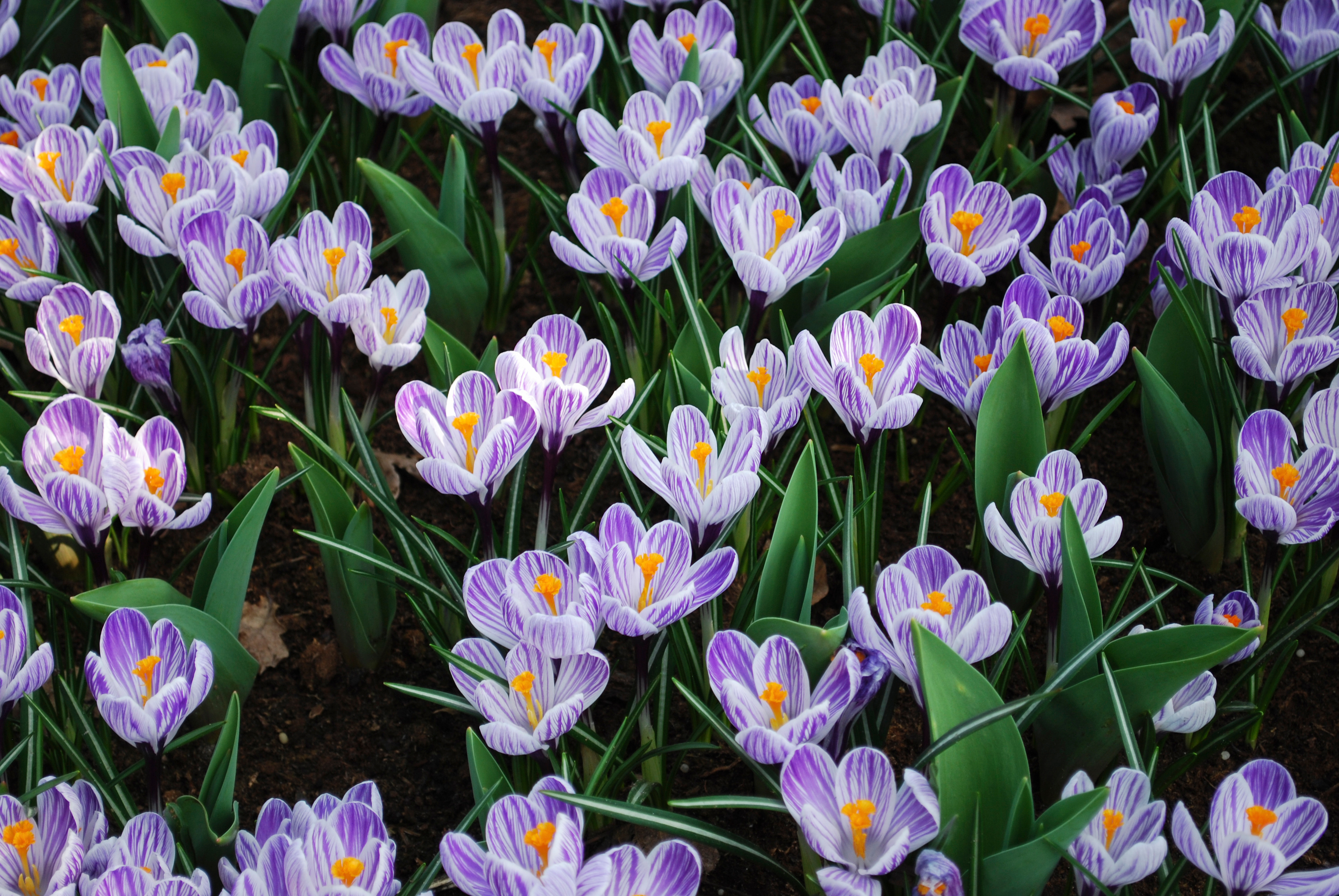
Start with a Better Bulb
When you compare two crocus bulbs side by side, it’s easy to see differences in quality. Large bulbs, like the one shown below on the far left, contain more stored food energy. The result is a stronger plant with more flowers.
To see our complete selection of crocus, click HERE.
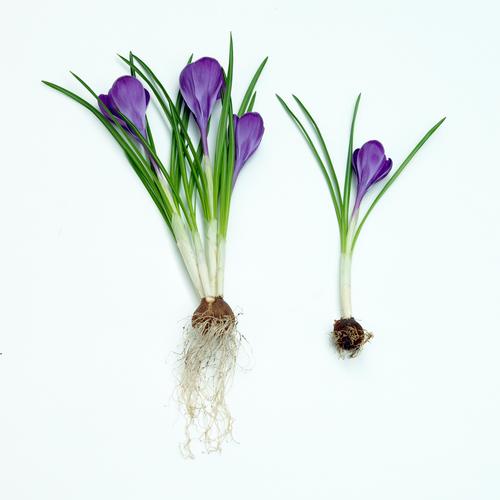
Plan for Success
Sun or Shade: Crocus bulbs (also known as corms) can be planted in full sun or partial shade. The bulbs bloom and die back before most trees and shrubs have leafed out, which means they are suitable for planting in areas that may be shaded in the summer.
Hardiness Zone: Crocuses are winter hardy in zones 3-8. Like many other spring-blooming bulbs, they need a cold winter in order to bloom properly. This means at least 10 weeks of temperatures at or below 45°F. If you are unsure about your growing zone, click here for a zone map.
Soil Conditions: As with other spring-blooming bulbs, crocus should be planted in well-drained soil. Soggy soil can cause the bulbs to rot.
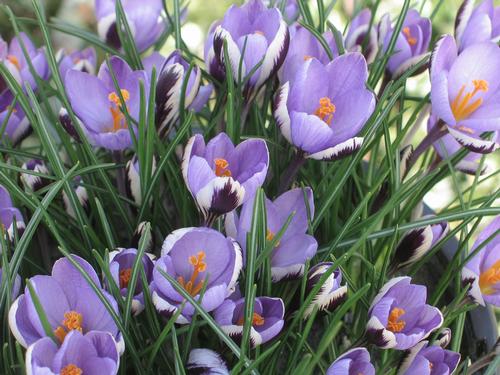
WHERE TO PLANT CROCUS
Perennial Gardens: Crocus bulbs are small and easy to tuck into flower beds. Plant them near the front edge when they’ll be easy to see. After blooming, the foliage will quickly fade away and make room for other plants.
Rock Gardens: Crocuses grow well in the spaces between rocks and in gravel gardens. With good drainage and warmth from nearby stones, they’ll bloom extra early. Plant a mix of species crocus and giant crocus to extend the show.
Flowerbeds and Walkways: Get your flower garden off to an early start by planting crocus along with other spring-blooming bulbs such as tulips, daffodils, muscari and hyacinths. Nestle a few crocus bulbs near the edge of a walkway, pathway or steps and enjoy their delicate blossoms every spring for years to come.
Lawn and Landscape: Get a jump on spring by planting crocus beneath trees and shrubs, or even right in the lawn. Crocus bulbs are small and only need to be planted about 3” deep, so it’s easy to plant a lot of them in a very short amount of time. They look best when planted in clumps or drifts, as they would be found growing in the wild. To watch a short video about planting crocus and scilla bulbs in a lawn, click HERE.
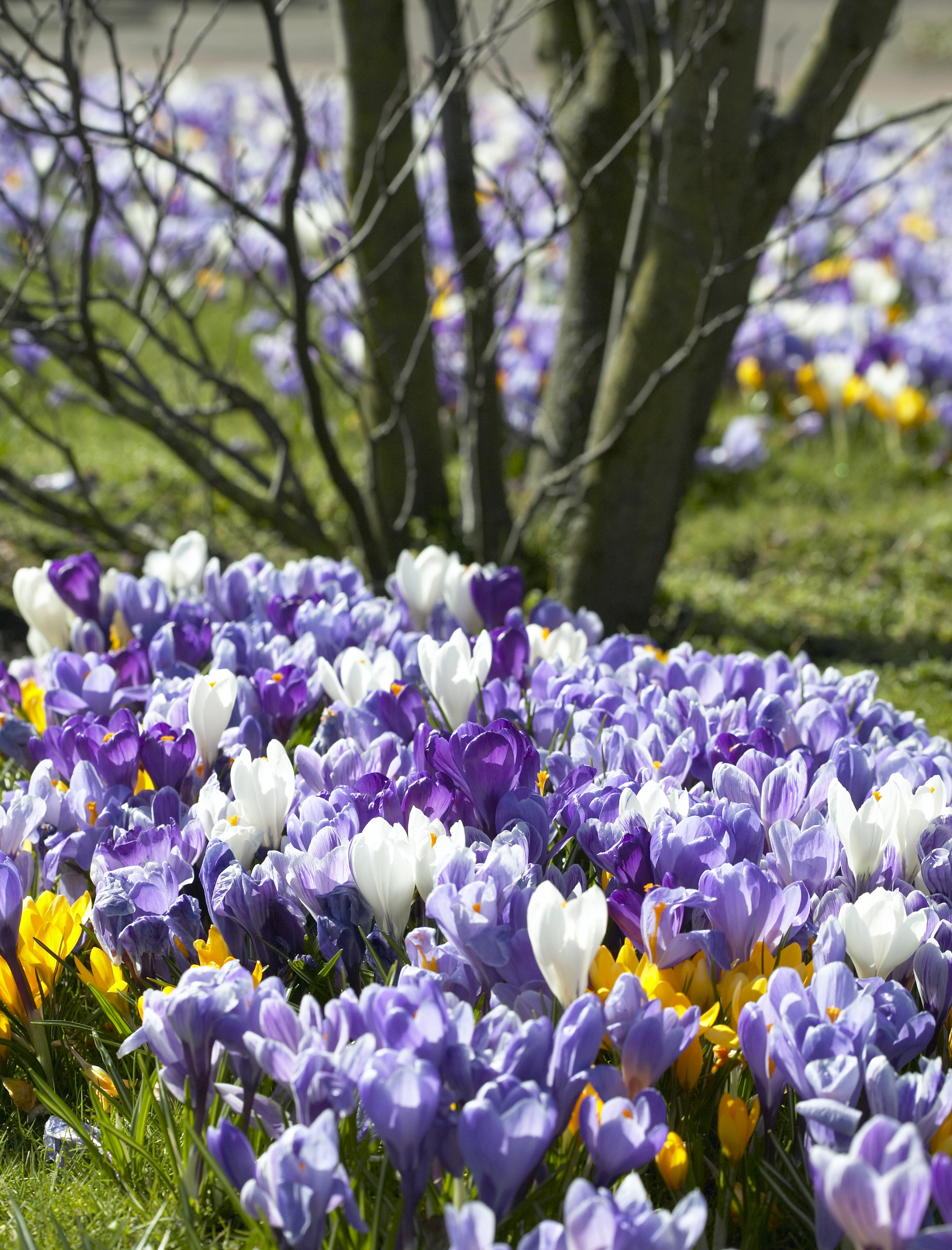
HOW TO PLANT CROCUS
When to Plant: Plant crocus bulbs in the fall, once the weather has cooled down and before the ground has frozen. For best results, plant the bulbs within a month after receiving them.
Depth and Spacing: Crocus look best when they are planted in groups of 3 to 9 bulbs. Space them 3" apart on center and plant 3” deep.
Planting Tips: Crocus are not fussy and will thrive almost anywhere you plant them. They grow best in loose, well-drained soil but will also tolerate both sandy and clay soils.
Unlike some bulbs, crocus don’t mind competition from neighboring plants. Just be certain the foliage gets plenty of sunlight until it fades away.
Squirrels and chipmunks sometimes dig up and eat crocus bulbs. If these pesky critters are a problem in your yard, you can help protect newly planted bulbs by covering the area with screening or by spraying the soil with a scent deterrent. Learn more in this article: How to Protect Fall Bulbs From Chipmunks and Squirrels.
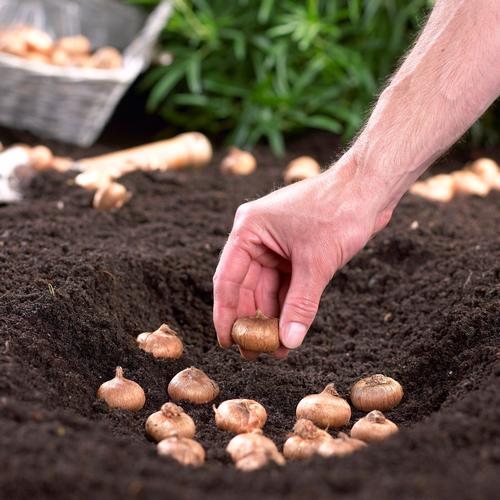
WHAT TO EXPECT
Crocus can flower any time from late winter to early spring. They appear on the scene very quickly. One day there will be no sign of growth and the next day you may discover them in bloom! Crocus flowers do not have stems. The buds emerge from the soil at the same time as the foliage. Each bulb typically produces several blossoms in quick succession.
Planting a few handfuls of crocus bulbs will fill your garden with flowers when you need them most. Crocus also provide an early and important source of food for bees. On sunny days you'll see them eagerly gathering the rich, golden-yellow pollen.
Snow and extreme cold can damage crocus blossoms that are already open but this will not affect the bulb or future flowers.
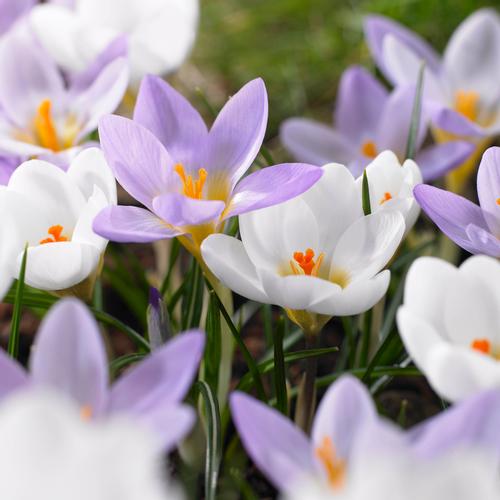
CARING FOR CROCUS AFTER THEY BLOOM
Once crocus bulbs have finished flowering, there’s no need to remove the spent blossoms as they will quickly melt away. Let the foliage continue growing. After a few weeks the leaves will have yellowed. You can leave them to dry and disappear or give the foliage a gentle tug so it pulls away from the bulb.
If you plant crocus bulbs in your lawn, hold off on mowing the area until the bulb foliage begins to wither. This will give the bulbs the time they need to store energy for next year’s flowers.
Over time, large clusters of crocus may become overcrowded and produce fewer flowers. If this happens, dig up the bulbs shortly after they finish flowering (so you still know where they are). Divide the clumps into smaller clusters and then replant, allowing plenty of space between each cluster of bulbs. Plant extra bulbs in new places or share them with friends.
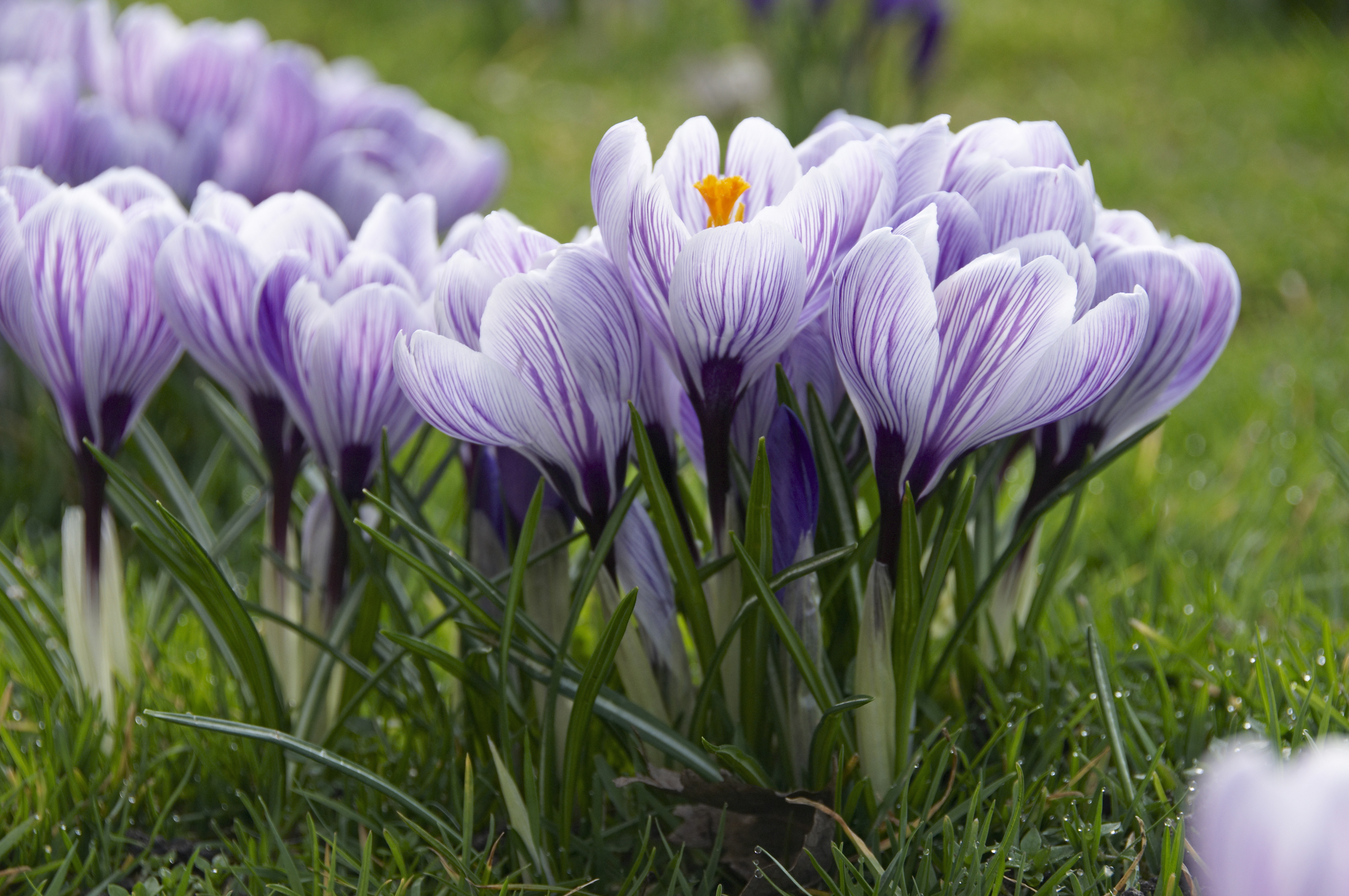
To learn about other early-blooming bulbs, read:
Earliest Bulbs for Spring Gardens
Hurry Spring With Early-Blooming Bulbs
How to Naturalize Spring-Blooming Bulbs
How to Plan a Spring Bulb Garden
